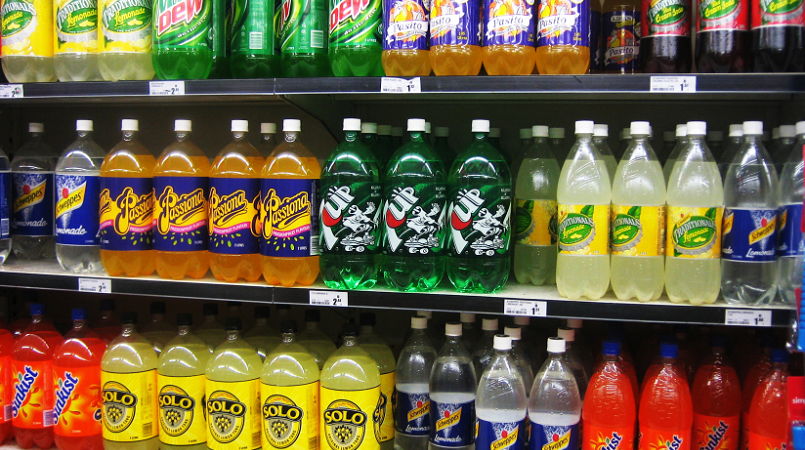
Seven out of 10 packaged foods contain added sugar that is not clearly identified by nutrition labels, according to new research.
Professor Bruce Neal from the George Institute for Global Health in Sydney reviewed more than 34,000 packaged foods with health-star ratings.
These are the voluntary front-of-pack labels, designed to help people make healthier choices.
But health experts said naturally occurring sugars found in fruits, vegetables and dairy were treated the same as sugars added during food processing.
"Good sugars are an integral part of a healthy diet and we need to be able to separate sugars naturally present in dairy, fruits and vegetables from sugars added during manufacturing," Professor Neal said.
"Added sugars are empty calories and a major contributing factor to the obesity epidemic and tooth decay.
"Australians would be much better off if they could quickly and easily see how much sugar has been added."
Experts found foods with low nutritional value — such as cakes, pies, ice cream, pastries, processed meats, potato chips and soft drinks — contained on average almost four times more added sugar than foods such as cheese, milk, bread, yoghurts or plain cereals like oats.
Do you know more about this story? Email investigations@abc.net.au
The health impacts of added sugars
Added sugars should be identified as "dietary guidelines, and the WHO recommend limiting dietary intake of added sugars because of the substantial health risks of overweight and obesity as well as poor dental health", the study authors said.
"However, food manufacturers in Australia are currently only required to list total sugar on nutrition labels and specification of added sugar is not required."
They said consumers must read "complex product ingredient lists" to work out how much was added sugar versus naturally occurring sugar.
"This can be challenging, even for nutritionists, given the wide variety of terms used for added sugar," the authors said.
On Monday, the Federal Court heard a food for toddlers marketed as being made almost entirely from fruit and vegetables contained so much sugar it should be deemed confectionary.
Health-star labels under review
The current health-star ratings system is being reviewed to consider whether it could be improved.
In the US, labels on packaged foods have been amended to reflect new scientific information, including the link between diet and chronic diseases such as obesity and heart disease.
From 2018, US food manufacturers will have to include both total and added sugars on food labels.
Professor Neal said Australia should follow suit.
"One of the key challenges relates to added sugars and we have shown here how it can be fixed," he said.
"We'd encourage food manufacturers to start labelling added sugars and [the] government to provide the framework."
Professor of Public Health Nutrition at Deakin University Mark Lawrence said "health warning" symbols should be displayed on discretionary foods.
"Part of the problem is that the campaign's main message, 'The more stars, the better', is misleading," he said.
"This change would provide food manufacturers with stronger incentive to reformulate discretionary foods to avoid attracting health warning symbols on their product labels."
The findings of the review will be provided to the Australia and New Zealand Ministerial Forum on Food Regulation in mid-2019.
Key points:
- 70 per cent of packaged foods contain added sugar not identified by nutrition labels
- Food manufacturers are only required to list total sugar, including natural and processed
- Consumers must read "complex product ingredient lists" to identify added sugar
Where added sugar is hiding
- Muesli bars
- Sauces and spreads, such as chutney
- Fruit and vegetable juices
